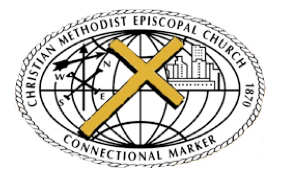
In the Christian Methodist Episcopal Church, bishops are administrative superintendents of the church; they are elected by “delegate” votes for as many years deemed until the age of 74, when he/she must retire. Among their duties are responsibility for appointing clergy to serve local churches as pastor, for performing ordinations, and for safeguarding the doctrine and discipline of the Church. The General Conference, a meeting every four years, comprises an equal number of clergy and lay delegates. In each Annual Conference, CME bishops serve for four-year terms. CME Church bishops may be male or female.
Sunday worship services in the CME denomination commonly include a Responsive Reading from scripture. A leader reads a line of scripture and the congregation reads a response. Bible passages are not arranged by topic; responsive readings are. Often, a single responsive reading consists of excerpts from several Bible passages.
The CME Responsive Readings are published in The Hymnal of the Christian Methodist Episcopal Church. Items 1–545 are songs, and items 546–604 are Responsive Readings. The official Responsive Readings are from the King James Version of the Bible.
The official logo or symbol of the Christian Methodist Episcopal Church was originally authorized by Bishop B. Julian Smith for the Centennial General Conference held in Memphis, 1970. It was officially adopted by the General Conference in 1974 as the denomination’s connectional marker.
Designed by Will E. Chambers, the logo shows the place of the Christian Methodist Episcopal Church in the rapidly changing urbanized society and its relation to God’s people. The logo is composed of:
- The World Globe which represents the vineyard of God;
- The Skyline which stands for the Church’s concern for human and urban problems and people’s alienation from God and one another;
- The Weather Vane which symbolizes the need of the Church to be flexible in terms of meeting the contemporary needs of people; and
- The Cross which denotes, by its vertical bar, the need for a proper relationship between people and God, and by its horizontal bar, the need for proper relationships between people. The total Cross is a sign of the final-assured victory through the blood of Jesus Christ.
Since the early 20th century the CME Church has explored the possibility of merging with other African American Methodist churches that are very similar in doctrine and practice.
In 1918 representatives of the CME Church, the African Methodist Episcopal (AME) Church, and the African Methodist Episcopal Zion (AME Zion) Church met in Birmingham, Alabama where they agreed to propose a merger. This “Birmingham Plan” was approved by the CME General Conference but did not win enough support in the annual conferences.[2]
More recently the CME Church engaged in talks with the AME Zion Church on a merger, with CME General Conference delegates approving a union in principle in 1986, and AME Zion delegates giving the same approval in 1988. Bishops of each church reopened the question in 1999, adopting a timeline for an eventual merger.[2]
In May 2012, The Christian Methodist Episcopal Church entered into full communion with the United Methodist Church, African Methodist Episcopal Zion Church, African Union Methodist Protestant Church, African Methodist Episcopal Church, and Union American Methodist Episcopal Church. These Churches agreed to “recognize each other’s churches, share sacraments, and affirm their clergy and ministries.”

